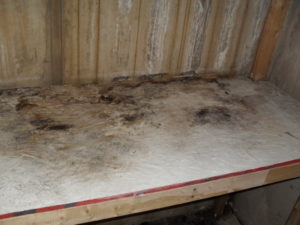 Obviously, not every American lives in an area with four distinct seasons. For people who live in particularly dry and arid environments such as Arizona or Nevada, residential mold tends to be less of an issue. This is mainly because the humidity in the air is consistently low, which makes it more difficult for various types of mold to grow.
Obviously, not every American lives in an area with four distinct seasons. For people who live in particularly dry and arid environments such as Arizona or Nevada, residential mold tends to be less of an issue. This is mainly because the humidity in the air is consistently low, which makes it more difficult for various types of mold to grow.
But the vast majority of North America experiences higher levels of humidity. Those areas that do experience four distinct seasons – especially areas with cold winters – typically have a much higher risk of dealing with a residential mold invasion.
But why is this? After all, winter is typically dry – at least when the temperature stays below freezing. Shouldn’t the risk of mold actually decrease when the weather gets cold? Why should winter increase – rather than decrease – the chances of a mold problem at home?
There are actually a number of reasons.
First off, even if the air outside is cold and dry, the typical home takes measures to ensure that the climate inside is warm and properly humidified. This obviously involves central heating for most people, and in many cases, integrated or standalone humidifiers are also utilized. The result of this can often be an environment that is especially hospitable to mold of the various types. Humidifiers in particular can be overused, creating the abundance of moisture in the air that mold needs in order to thrive.
Secondly, winter is unpredictable. You may have a week or two of consistent snowfall, during which the temperature stays below freezing. But then the temperature might rise above freezing and stay there for several days, or even weeks. As a result of this, accumulated snow will begin to melt in the moisture around the foundation of the home will increase dramatically. In many cases, this is can lead to, or contribute to, basement mold infestations – which can then spread to other areas of the home.
Third, winter obviously doesn’t last forever. Eventually all that snow will melt and become moisture that can seep into the home and allow mold spores to thrive.
It all comes down to understanding the conditions that mold really needs in order to grow and flourish. Those conditions are warmth, and some sort of porous surface on which to feed and colonize. Cellophane surfaces, such as wallpaper or old stacks of magazines, are good examples of the surfaces mold prefers. Often times, these infestations go deep into the building materials of a home, and cannot be seen with the naked eye.
The moral of the story is that homeowners shouldn’t let their guard down concerning residential mold just because the winter is coming, or because the air outside is dry. There are countless documented cases of residential mold infestations all across the country, and many of these occur during the winter in areas of heavy snowfall and low temperatures. The best way to protect yourself from mold problems is to seek the help of a qualified mold testing and mold inspection professional, who will be able to assess your home accurately — both for current mold problems and future risks.

